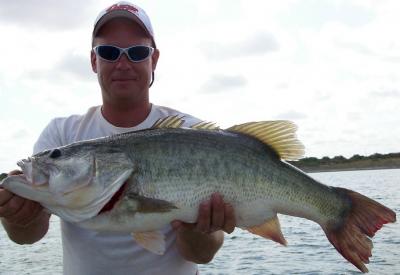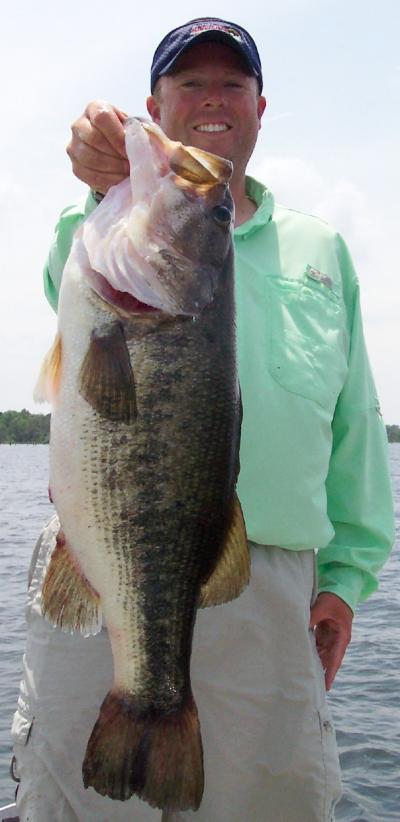If it's summer on Lake Fork, you can count on two thingshot weather and deep bass. And if the bass are deep, a Texas rig or a Carolina Rig (C-rig) are often your best weapons. Both will catch bass, but how do you decide which set up to choose and how should you rig it up based on the conditions you're confronting? This article will focus on a few basic rules of thumb to help you answer the whens, wheres, and whys of TX rigs and C-rigs.
C-rigs, especially when rigged with a heavy sinker (3/4 to 1 oz), work best in several different situations. First, a heavy sinker allows you to make long casts and quickly drag the bait across a wide area while maintaining contact with the bottom the whole time to find bass fast. In addition, I'll use 20 lb P-Line Fluorocarbon, and the heavy sinker and fluorocarbon line clearly transmits changes in bottom composition or pieces of isolated cover. I work the bait quickly until I find rocks, weeds, or wood, then slowly work my bait through this fish holding cover. The ability to cover a lot of water and find small areas of cover makes the Carolina rig a great search bait as well as a great bait to catch bass once they're found.
TX rigs, in contrast, typically work best when fishing heavy cover, specific targets, or steep drops. In heavy cover, a C-rig will often hang up more and will not get into the small holes in grass clumps or brush piles as well as a TX rig. In addition, when bass are located in very specific pieces of cover or structure, a TX rig will still provide great action while shaking it in place (similar to the way you shake a worm on a shaky head jig). This subtle quivering action while leaving the bait in place often triggers inactive fish that won't react to a rapidly moving or a dead-sticked C-rig. Finally, when fishing very steep banks, pond dams, or ledges, TX rigs can be slowly crawled down the slope while a C-rig will often too quickly pull your bait all the way to the bottom of the break.
Another factor to consider is the size of the weight you use. Tungsten weights are harder and smaller, transmitting more feel and getting into tighter pieces of cover. Heavy weights are often good in summer, as the fast fall triggers fish into a reaction strike and also reaches the bottom quicker and allows better feel, even on windy days. While the slow fall of a small weight will sometimes get finicky fish to bite, I often start with a heavy weight and go smaller if I must, instead of the other way around.
In addition to the size of weight, the soft plastic lure you use on your rig will also affect the drop speed and performance of your set up. Bulky baits with big tails or appendages will slow the fall of your rig and work best when paired with bigger weights and moved aggressively. Lures like Fork Creatures, Baby Fork Creatures, Top Dog lizards and big ribbon-tail ring worms like 10" Lake Fork Worms move a lot of water and trigger big bass that are actively feeding. Hop and swim these baits on a TX rig or C-rig to get their full action. Conversely, when the bite is tougher and you need to coax those big girls into biting, more streamlined soft plastics are in order. In this case, I'll rig up with straight tailed worms like Twitch Worms, Ring Frys and Baby Ring Frys, or craw worms like the Fork Craw. And for an especially tantalizing slow fall, try a Magic Shad or Live Magic Shad on the business end of your C-rigbass out deep love them just as much as they did when they were up shallow in the spring.
Of course, there are no absolutes in bass fishing. However, I hope these basic rules of thumb help make your decision on what to rig up a little easier on your next trip. Here's hoping you catch the lunker of your dreams. If I can be of assistance, please contact me at 214-683-9572 (days) or 972-635-6027 (evenings) or e-mail me through my website, www.LakeForkGuideTrips.com.
Tom Redington is sponsored by Ranger Boats, Diamond Sports Marine, Lake Fork Trophy Tackle, and P-Line Fishing Lines.



